ROOM: The Space Journal is one of the prominent magazines on space exploration, technology and industry. At ROOM, we share a common dream – promotion of peaceful space exploration for the benefit of humankind, all while bringing you comprehensive articles on a variety of interesting topics. Our authors include experts and industry leaders from all over the world, which lets us bring you the most up-to-date and accurate information about hubble space expansion.
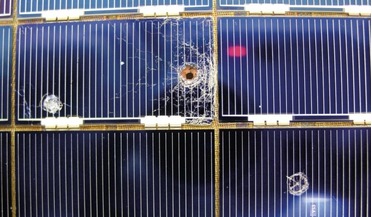 February 2021
Space archaeology - preserving our orbital heritage
February 2021
Space archaeology - preserving our orbital heritage
...the regulations) but now awaiting the inevitability of atmospheric drag and gravity to take effect. The Hubble Space Telescope - cultural as well as scientific icon. Harvest option The threat posed by debris within .... Case study One notable space asset within the space heritage discussion is the Hubble Space Telescope (HST). Launched in 1988 aboard Space Shuttle Discovery, it is clear that the venerable space telescope has a limited future...
 February 2022
Revolution and responsibility: the challenges of space
February 2022
Revolution and responsibility: the challenges of space
... at the beginning of the twenty-first century. Surrounded by stars - this starfield, captured by the NASA/ESA Hubble Space Telescope’s Wide Field Camera 3 and Advanced Camera for Surveys, contains the globular cluster ESO 520...and could even be infinite. Over the centuries, our astronomical situation has hardly improved: following the expansion of the space scale, it is the temporal scale that has undergone a tragic extension for those who hoped ...
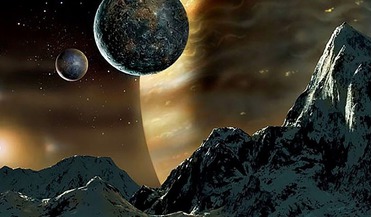 March 2016
Why We Need Space Artists
March 2016
Why We Need Space Artists
... the same sort of comments when photography was invented, when digital art became available, when the Hubble Space Telescope sent back its first amazing images of distant stars and nebulae. . . But let’s take a ...steaming thermal areas that seemed like the gates of Hell itself. In deep space - the province of stars, nebulae and galaxies - even the Hubble Space Telescope and developments in terrestrial observing have not superseded but only provided...
 February 2020
Preserving our space heritage
February 2020
Preserving our space heritage
...we would wish to preserve as important parts of our space heritage in some kind of space museum? Save our satellites Scientific satellites such as the Hubble Space Telescope (HST) have contributed enormously to our understanding ... to the latter question is perhaps an easier one to address. Scientific satellites such as the Hubble Space Telescope (HST) have contributed enormously to our understanding of the universe and are surely worth preserving...
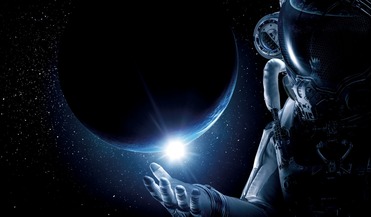 January 2023
Original Sin - Power, Technology and War in Outer Space
January 2023
Original Sin - Power, Technology and War in Outer Space
...interlinked. “Politics has always been at the heart of humankind’s exploration and utilisation of space, and the space programmes themselves have never been able to transcend terrestrial international politics”. US astronaut, Kevin Ford...in part originally designed and funded to meet the Pentagon’s and the Intelligence Community’s needs. The Hubble Space Telescope is an adapted KH-11 spy satellite that simply looks to the cosmos rather than down on...
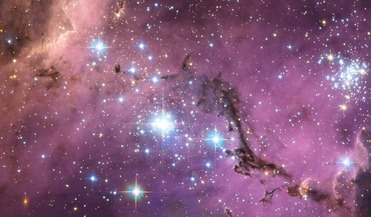 26 April 2019
As mystery of the Universe’s expansion rate widens, a simple solution is offered
26 April 2019
As mystery of the Universe’s expansion rate widens, a simple solution is offered
...uses the same type of object but utilises a different method to calculate the Hubble Constant. Instead of observing one Cepheid at a time with NASA’s Hubble Space Telescope as it makes its 90-minute orbit around Earth, a team of scientists... the entire Universe and all that fills it such as space, time and matter, burst into existence in a Big Bang. Hubble's initial value for the expansion rate was approximately 500 km/sec/Mpc or about 160 km/sec...
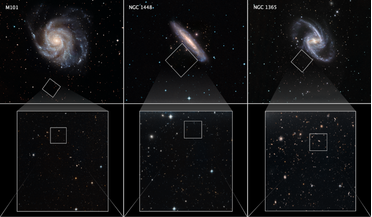 17 July 2019
New measurement deepens mystery of Universe’s expansion rate
17 July 2019
New measurement deepens mystery of Universe’s expansion rate
... physics of the Universe in order to explain it. These galaxies are selected from a Hubble Space Telescope program to measure the expansion rate of the universe, called the Hubble constant. The value is calculated by comparing the galaxies' distances to the apparent rate...
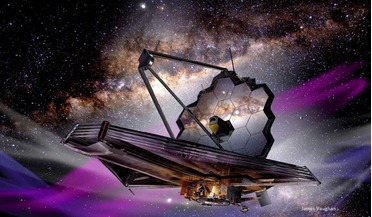 May 2022
Essential guide to the James Webb Space Telescope
May 2022
Essential guide to the James Webb Space Telescope
... science, we cannot imagine the universe the James Webb Space Telescope is about to reveal. WST is not ‘Hubble’s Replacement’ but ‘Hubble’s Successor’, designed to build on Hubble’s rich legacy and even to work side-by-side with... of previously undiscovered galaxies, their stellar light shifted into the infrared by the Universe’s expansion. All this serendipitous science before all the instruments have even been brought online. Complementing ...
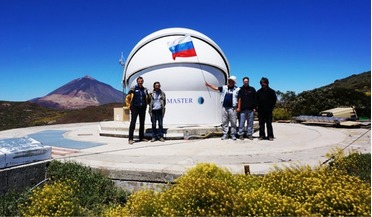 February 2017
Global robotic network for monitoring near-Earth and outer space
February 2017
Global robotic network for monitoring near-Earth and outer space
...Jupiter which is 8.6 km in diameter, has an absolute magnitude of 21 and the visible light limit of the Hubble Space Telescope is 32. The angular speed of movement can reach 20-50 degrees per second. In recent years, the MASTER ... absolute magnitude 22-23, while helping to resolve the following fundamental tasks: Researching the laws of accelerated expansion of the Universe with the use of type 1a supernovae. The discovery of these objects in ...